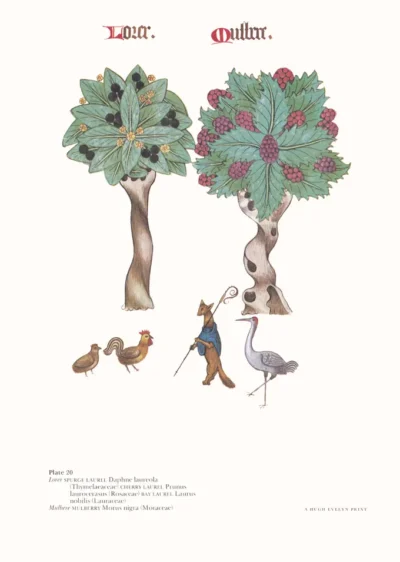Comfrey & Daisy
Original price was: £20.00.£12.50Current price is: £12.50.
Comfrey and Daisy (scroll down for a more detailed Description)
Published 1972 by © Hugh Evelyn Limited; drawn around 1525, these images were finished in gouache and watercolour (see description here)
Size: c. 23 x 33.5 cm [9 ″ x 13 ¼ ″] may vary slightly from printers’ cut 50 years ago
Printed on high white matt cardstock 144 g/sm2.
Print is STANDARD size – shipping is the same for 1 to 10 prints (based on largest print size in your order) – see Shipping & Returns.
In stock
Description
Cufyre: Comfrey is a common name for plants in the genus Symphytum, important herbs in organic gardening. It is used as a fertilizer and as an herbal medicine. The most commonly used species is Russian comfrey Symphytum uplandicum, which is a hybrid of Symphytum officinale (common comfrey) and Symphytum asperum (rough comfrey). The name derives from Old French confire and Latin cumfiria to Latin conferva – from the verb confervere – to grow together. A local name ‘˜knit-bone’ it was used for bleeding, sprains, bruises, swellings and fractures. Medicinal use is shown by the name officinale. Gerard (1) recommended Comfrey for ‘paine in the backe gotten by any violent motion, as … overmuch use of women … although the involuntarie flowing of the seed in men be gotten thereby.’ An infusion of leaves was used for colds and bronchitis. They could be dipped in batter and fried. Russian Comfrey was originally introduced to this country as cattle food, encouraged by Cobbett (2), among others. Geoffrey Grigson (3) and Agnes Arber (4) both have the woodcut of Comfrey from Otto Brunfels’ (5) Herbarium, and Blunt (6) reproduces the original water-colour by Weiditz for Brunfels’ woodcut, and a woodcut of the species from Mattioli’s (8) Commentarii (1565). Dayes: Bellis perennis is a common European species of daisy, of the Asteraceae family, often considered the archetypal species of that name. It is a native flower found throughout the British Isles. It is abundant in short grassland, its seeds (on average 125 per flower) only dispersed for short distances by wind, but sometimes being carried further in mud on the feet of birds. Today its presence on garden lawns is reduced using hormone weed killers. The common name of this plant derives from the Old English daeges-eage, or dayseye. This relates to its habit of only opening its flower heads when it is light, about an hour after the sun shines and taking an hour and a half. Chaucer (9) noted this, referring to it as the ‘dayseye or elles the ye of day’ and adding that it was ‘the emperice and flour of floures all’, continuing’ of all the floures in the mede Then I love most these floures white and rede Swiche as men callen daysies in our toun. That blisful sighte softneth all my sorwe.’ The Daisy’s other local names, including Silver Pennies, Innocent, Little Open Star, Miss Modesty, White Frills and Bessy Bairnwort, the last, from Yorkshire, reflecting that it was sometimes used as a medicinal wound herb.
Additional information
| Weight | 0.0094 kg |
|---|---|
| Dimensions | 24 × 33.7 cm |





